
On


On

Walking across campus on a beautiful fall day, I encountered a group of students trying to position themselves at the best angle to view the new green roof on the Nancy C. Sawin Math/Science Building. They determined that the top of the hill, across from the back entrance to the Middle School, would offer the best opportunity to take a peek at history in the making. They were proud of the fact that their school was the first in the state of Delaware to apply existing technology to address, in a small way, the growing concern about greenhouse gasses and global warming. Two years ago, these same students had listened to a presentation on campus by Senator Thomas Carper in which he challenged those present to look with him for solutions to a problem largely created by decisions our fellow citizens had made over the years. Some of the more penetrating questions directed at Senator Carper that January day two years ago were offered by our younger students. The phrase “…and the children shall lead” kept resounding in my head that day and ever since as Sanford School became more proactive in its efforts to address some of the pressing issues related to the environment.
Although civics is not taught as its own course quite the way it was a generation or two ago, it is exciting for me to see our students engaged in lively discourse about current issues. Clubs have been formed in the last year to address environmental and human rights concerns and the initiative for these groups invariably has come from students. Through a host of service projects, Sanford students have chosen to speak out on a number of issues and let their voices be heard. They believe, as do their teachers, that the impact of their efforts can lead to change.
Cheryl
Associate
Contributing
Theresa Medoff
Contributors
Cecilia Baum
Rosemary Brooks
Sue Dagenais
Merrilee Mose
Jackie Pitts ’55
Christine Yasik
Loren Yates
Photography
Carlos Alejandro
Theresa Knox
Jen Nightengale ’82 Roofscapes, Inc.
Joan Samonisky
Stan Waterman
Graphic
Kedash
Accepting the assumption that it is the responsibility of a school to educate, to inform and to present a variety of perspectives, Sanford is pleased to see the growth in the awareness of our students. In a nonpolitical manner, students have been encouraged to help their school become more energy efficient and to learn how even the smallest-seeming action can make a difference. When the Middle School Student Council approached me about the benefit to the school to install waterless urinals in the boys’ bathrooms, I listened and then learned with them as we researched the enormous savings of water usage. The urinals have been installed. When the faculty learned how many lights were being left on in classrooms during the school day, they embraced the school goal to reduce energy consumption in a major way. In 2007, thanks to a unified school effort led by the faculty, the electric bill was cut by 10%. When we were approached by one of our students, Krista Bacchieri, to participate in Power Up Gambia (see page 7), the decision was made to do so in order to educate all of us about solar panels and the potential this technology would have, not only on third world countries, but on the entire world.
As teachers, we are fortunate to have the responsibility to develop inquiring minds and sensitive hearts. Students are watching us to see if we live what we teach. They are listening to politicians talk about the importance of conservation, but then see it too often pushed back on the list of priorities, especially during an election year, because other hot button issues generate more votes. Who has the courage to say that we are moving down the wrong environmental road? What can we do in the rolling hills of Hockessin?
We can honor the heritage of our school and try to continue to lead as we seek ways to protect the extraordinary natural resource which is our campus. Rather than be fixated on labeling ourselves a “green” campus, we need to take what we have and make it better. We need to educate this generation of students to take responsibility with us as we consider the best ways to implement new technologies, such as solar panels, green roofs, waterless urinals, new packaging for food in the cafeteria, and more energy-efficient windows. We need to prepare our students for a day when scarcity may be a word heard more often than abundance. The good news is that our students want to understand, and they have a deep sense of justice to do the right things and make responsible decisions. My hope is that we will listen to their environmental hopes and dreams and let them lead us forward.
Douglas W. MacKelcan, Head of School

By Theresa Gawlas Medoff
Thanks in parT To sanford’s enviable campus seTTing, sTudenTs here have always been environmenTally aware. in earlier years, sTudenTs noT only enjoyed The beauTy and peacefulness of Their naTural surroundings, They also connecTed wiTh Their earTh in pracTical ways by working in The fields, caring for farm animals, or picking apples in The orchard. The farm, of course, is long gone, buT Today ’ s sTudenTs use sanford’s woods, ponds, sTreams, and gardens for observaTion and research.

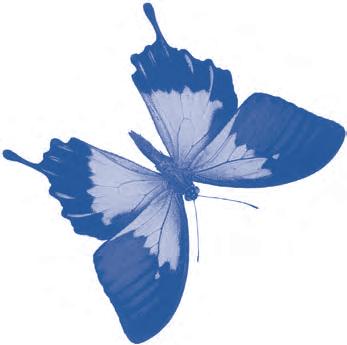
the newest addition to this outdoor classroom is the green roof installed on the Nancy C. Sawin Math/Science Building. As the rooftop sedum garden was beginning to take root this fall, science teachers from all three divisions met to plan curriculum that would take advantage of this unusual educational resource. Conducting research on the green roof will expose students to the interdisciplinary nature of real-life science because it brings together plant biology, environmental science, economics, and the physics of energy usage, says Andre Dagenais, Chair of the Upper School science department. Physics students can use the roof to measure absorption of electromagnetic radiation, while biology students can research how plants pollinate and adapt to their environment. When seventh graders learn about bioremediation, the green roof provides a perfect, small-scale example of how plants filter pollution through transpiration, notes Middle School science instructor Michelle Dresser.
Faculty hope to build a catwalk around the main roof for Upper School students who are conducting research. The low-level roof over the greenhouse portion of the building provides safe access for younger students. In addition, Lower School science teacher Kim DeHaven hopes to build a storage shed with a green roof in the Lower School garden to provide Sanford’s younger students their own functioning green roof.
“At this age, the students really get it. They understand how we all share the same airspace, how pollution effects everyone all over the world. They learn about how our behavior locally, nationally, and globally is related to global warming and global climate change, and they understand the implications of that,” says Middle School science teacher Beth Whipple.

Olivia Civiletti ’17 plants flowers in the Lower School Friendship Garden.
In keeping with the science department’s commitment to a vertical curriculum that flows smoothly from grade to grade and division to division, students from Lower and Middle School will collaborate with Upper School students on some of the research projects. A group of sixth grade students, for example, is teaming up with AP Environmental Science students to compare the temperature of the green roof with the temperature of a shingle-covered roof. Others will measure the effect of the roof on water runoff.
The green roof is the most recent of numerous campus projects that have enhanced the science curriculum for Sanford students while improving the environment. The Cab Calloway Pond, near the Nancy C. Sawin Math/Science Building, which was reconstructed in 1994, was dredged two years ago to remove years of accumulated silt. In the future, the new green roof should help to slow the silting in of this pond. In 2007, Sanford completed a several-year effort to restore the pond, dam, and stream in Chapel Valley, which had been severely damaged by years of erosion and growth of invasive plant species. The stream restoration not only benefits the White Clay Creek watershed, it also provides students with easier access for conducting stream studies and learning about the necessity of riparian buffers to prevent erosion and silting in of waterways.
Sanford students frequently use the stream for science research. Just recently, for example, first graders built stick piles along the Chapel Valley nature trail to create habitats that could be used by insects, amphibians, and small mammals. Each year, sixth-grade science students conduct stream studies in Chapel Valley. They also place leaf packets in the stream and return a few weeks later to see what organisms have taken up residence.
In every grade and every division, Sanford students are learning about the environment and our responsibility for preserving it.
A few years ago, Lower School students who found a spider in the building might have stepped on it, or perhaps called upon their brave science teacher, Kim DeHaven, who would have transported the arachnid outdoors. These days, the
kids themselves are the ones who gently move spiders and insects to the more hospitable surroundings of the Lower School garden.
Students cannot help but become more environmentally aware in DeHaven’s classroom/laboratory, which they share with a menagerie that includes a snake and hissing cockroaches. Every day after lunch, students put apple cores and other food scraps in the worm composter, and that fertile soil is then used as compost in the Lower School garden. The garden has a small pond and is planted with native perennials designed to attract hummingbirds and butterflies. The children take great joy in planting annuals each spring, knowing that they are contributing to the garden’s beauty. “The garden is always changing and developing. It’s a great learning experience for the students,” DeHaven says. The garden will soon earn designation from the National Wildlife Federation as a “certified wildlife habitat.”

Environmental lessons for Lower School students extend far beyond their little garden. The recycling bins in the science classroom remind them of the importance of recycling bottles, cans, plastic, and paper, while in the adjacent computer room students can deposit batteries, cell phones, and printer ink cartridges that Lower School technology coordinator Pat Martin collects for recycling.
Martin has a strong background in solar energy—it was his first career before teaching—and he has worked with DeHaven on numerous projects that teach students about greenhouse gases, global warming, and alternative energy sources. Each year, when third graders design and build model cities, they are required to include green roofs and solar panels on every facility. The assignment also teaches them about city planning and the need for wastewater treatment, green space, and parkland, DeHaven adds.
Just as in Lower School, the Middle School emphasizes the importance of recycling. Students in the Seventh and Eighth Grade Ecology Club assume responsibility for emptying the paper recycling bins each week. The Middle School computer lab is a recycling collection point for household batteries, cell phones, and used ink cartridges, through which Sanford earns credit toward the purchase of computer hardware and software.
Environmental lessons are sometimes incorporated into courses such as social studies, geography, and reading. Every year, the science classes have at least some component related to the environment, but the sixth-grade science curriculum is particularly oriented toward environmental science. They learn about the water cycle, animals, biomes, and the effect of pollution and global warming on the earth.
On their five-day trip to Cape Cod, sixth graders are immersed—literally and figuratively—in coastal studies. They wade into the salt marshes to observe the plants, birds, fish, and crustaceans that inhabit the tidal pools. On a research vessel that serves as Woods Hole Oceanographic Institute’s floating classroom, the students learn about meteorology and physical oceanography. They also learn how the blood of horseshoe crabs is used in medical testing and observe marine animals up close in the vessel’s touch tank. For many students, a highlight of the trip is a whale-watching cruise taken with a naturalist from the Provincetown Center for Coastal Studies. Sixth graders visit the Stroud Water Research Center to learn about watersheds and ecosystems. They then come back to campus and apply their knowledge to studies of Sanford’s streams. As part of their study of animals and biomes,

in
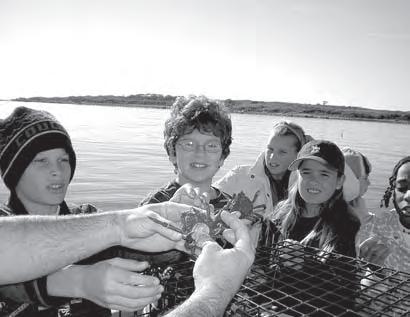
During their research cruise, the guest scientists had opportunities to examine living sea creatures and to manipulate research equipment.



students also learn about the effects of pollution and the greenhouse effect. “At this age, the students really get it. They understand how we all share the same airspace, how pollution effects everyone all over the world. They learn about how our behavior locally, nationally, and globally is related to global warming and global climate change, and they understand the implications of that,” says Middle School science teacher Beth Whipple.
“At Sanford we are not just talking about helping the environment, we are really making a commitment to it,” says Kim Walsh. “Educating our students about the environment fits in with our mission to prepare our students for the future. These students are the future leaders, and once they go off to college and work, they will be able to make environmental changes that will benefit our world.”


Upper School science students use the ponds, streams, and woods on campus for studying plants, ecosystems, and the water cycle. When the weather turns colder, they head for the Upper School greenhouse, which science teacher Jennifer Muller ’90 revitalized last year using a grant from the Home and School Association. “We have fig trees and lemon trees that are bearing fruit and many different kinds of flowers for the study of plant reproduction,” Muller says. “The variegated leaves are nice for an experiment that I do with my chemistry students. We separate the different plant pigments in them using chromatography. In biology, we will study seed germination, phototropism, gravitropism and photosynthesis, cell structure, membrane transport. There is so much to do. Having a greenhouse has really enriched our science curriculum and enhanced the beauty of the entrance to the math/science building.”
Student interest in advanced study of environmental science has grown in recent years, and Sanford has responded by adding an AP Environmental Science course to advanced science offerings. “AP Environmental Science is a great course because it is so interdisciplinary. It combines science, economics, politics, law, culture, geography, current events, and statistics,” notes Upper School science instructor Kim Walsh. The AP Biology course has a strong component on the environment, and seniors can also elect to take a trimester course in environmental chemistry. In addition to field studies and laboratory work, science students benefit by hearing from speakers such as Dr. Gerald Bricks, parent of alumnus Joshua Bricks ’93, who came to campus this fall to present Al Gore’s slide show An Inconvenient Truth

Seniors Andrew DeSantis and Tyler Shields discuss ideas with Dr. Bricks (center) on how to spread the “green” message to the greater Sanford community.
Some 30 to 40 Upper School students are members of Sanford Environmental Action League (SEAL), a club devoted to raising awareness about environmental issues, both on-campus and in the community. This year, says club president Suchit Tuli ’08, the group aims to increase the number and types of materials that Sanford recycles as well as to find ways to reduce waste. Members also are surveying other schools about their recycling efforts in preparation for a campaign to encourage educational institutions throughout the state to recycle.
“At Sanford we are not just talking about helping the environment, we are really making a commitment to it,” Walsh says. “Educating our students about the environment fits in with our mission to prepare our students for the future. These students are the future leaders, and once they go off to college and work, they will be able to make environmental changes that will benefit our world.” a

Sanford made environmental news this fall when it installed what is only the third green roof in the state of Delaware—and the only one on a school. Seven colorful varieties of sedum now sprout atop the roof of the Nancy C. Sawin Math/Science Building. The building was constructed in 1970 and last had major repairs to the roof following the 1989 tornado that swept through the Sanford campus. The need to replace the roof presented the perfect opportunity to make an energysaving, environmentally sustainable upgrade, particularly since the science building’s flat roof is ideal for this type of enhancement, says John Emery, Director of Plant Operations.
Green roofs have several environmental advantages. They save energy by keeping the building cooler in the summer; they reduce the urban “heat island” effect; they filter pollutants from rainwater and air; and they reduce the volume and speed of erosion-causing runoff. The roof also provides a hands-on learning opportunity for students of all ages (see page 2).
Several types of green roof exist, ranging from the lower-cost, low-maintenance ground-cover type that Sanford chose to elaborate gardens designed to mimic woodland, heath, meadow or savannah. Underneath the green, the roof varies little from a more standard roof; it is simply built stronger to hold the extra weight and has higher edges to hold the garden in place. The plants on the Sanford roof actually grow in a 4 1/2-inch thick, organic medium that is lighter than soil. The major environmental advantage is the reduction of rainwater runoff by 50 to 60 percent. The roof captures and holds as much as 1/2 inch of rainwater per hour. Much of the water then evaporates or is absorbed by the roots of the plants. The rest is filtered before it runs off the roof and eventually makes its way to the adjacent pond and the White Clay Creek tributaries on campus.
The main energy savings from the roof comes in the summer when the plants and growing medium absorb heat during the day and release it at night, cutting down on cooling demands for the building. The organic roofing material also protects the underlying roof from the ultraviolet radiation and the temperature-related expansion and contraction that cause deterioration of a roof. Green roofs are expected to last twice as long as normal roofs, so that the extra cost incurred during installation will be more than recouped over the roof’s lifetime.
“If this roof lasts 60 years instead of 30, we will have saved an estimated $100,000 or more,” Emery says.
The green roof is just the latest in a series of energy-saving initiatives that Sanford has implemented over the past decade. Cleaner burning natural gas replaced oil in the school’s newest buildings, Albright/Yearsley Hall (Lower School) and Stephen May Hall, and computerized heating/AC systems in these buildings automatically regulate temperatures to save energy and money. Automatic faucets and automatic-flush, low-flow toilets conserve water, while electric hand-dryers eliminate paper waste.

This green roof, atop the former Hostess Cupcake Factory in Hoboken, New Jersey, is similar to the green roof installed on the Nancy C. Sawin Math/Science Building.

Changes are being made in older buildings to save energy, too. Natural gas is gradually replacing oil heating in buildings when old boiler systems wear out. Within the next year, the last of the old, drafty, single-paned windows on campus will be replaced by energy saving, double-glazed insulated windows. Programmable thermostats have been installed in most campus buildings, a move that experts say is one of the most effective ways of conserving energy. “The whole campus also is more aware of thermostat settings,” Emery says. “We are setting them a few degrees cooler in the heating season and a few degrees warmer during the summer.”
As old lighting fixtures burn out, they are being replaced with fixtures that are much more energy efficient. Emery estimates that replacing the light fixtures in Middle School alone has resulted in a savings of $7,500 annually, paying off the $15,000 initial investment within just two years. This fall, motion sensors that turn off lights automatically were installed in a handful of rooms to test their practicality before widespread installation. Emery also plans to put desk lamps in classrooms so that when teachers are working alone in a classroom they can turn off the overhead lights.
“Last year we set a goal of a 10-percent energy savings over the previous year, and we met that goal,” Emery says. “This year we are aiming for another 2 percent savings.” In addition to the money saved through conservation, Emery adds, Sanford lowered costs an estimated $30,000 to $40,000 by going out to bid for electricity after the electric industry in Delaware was deregulated.
In some cases, the change to more environmentally responsible practices costs no more than their energy-hungry counterparts. But even in those instances where the initial cost is higher, the long-term payoff makes it a fiscally sound investment. More important, the energy- and water-saving changes Sanford is making model the type of environmentally responsible choices we are teaching students to make now and in the future. a
As an idealistic young college student in the mid-1970s, Abbot Stevenson ’73 knew she wanted a career where she could make a difference. Her chosen field became clear to her on a plane flight over a coal-mining region in southern West Virginia. “I looked out the window and saw all this devastation—the tops of the mountains were cut right off,” she recalls. Abbot had witnessed the effects of mountaintop removal, also called strip-mining on steroids, which destroys vast areas of forests and streams and creates large amounts of waste.
After earning a degree in civil engineering, she went to work for the Ohio Department of Natural Resources in a division that regulates coal mining. She later switched jobs and is now working in water pollution control for the Ohio Environmental Protection Agency. “We’re making progress— the Cuyahoga River is no longer capable of catching on fire— but we still have a long way to go,” she says.
Abbot is one of a host of Sanford alumni with careers in the environmental field. Chris Brosius ’94 works as the Watershed Manager for the West Maui Mountains Watershed Partnership, an organization that aims to preserve 50,000 acres of native Hawaiian forest to provide a clean, sustainable water

This is a photo of one of our environmental alumni, Christine Whitcraft ’95. She is shown in the field examining a mud sample. Christine conducts research on how perennial pepperweed, an invasive plant, impacts the soil and food web in a brackish marsh in northern San Francisco Bay. This information will be used to design and implement a management plan for the San Francisco Bay National Estuarine Research Reserve. Christine earned a PhD in biological oceanography in January 2007.
source for the island and to protect the habitat of more than 126 rare and endangered species that live in these forests.
“Our work is difficult and challenging with activities focusing on removal of invasive species, promoting anti-wildfire programs, maintaining preserve fences, working with local government, writing grants, and engaging landowners as well as the general public,” he says. “It is an exciting job with a bit of adventure, including hiking, camping, and flying in helicopters. The land is beautiful, and it is a reward to just be in its presence.”

Christine Tallamy Glazer ’97 also lives in Hawaii. After working for years as a marine biologist, she has switched careers and is teaching math and science at the high school level. “My Sanford education flamed a lifelong interest in science and conservation,” she says. “I hope to spark similar interests in the youth I teach.”
Gail Samples ’74 works as a research technician in the Biomedical Marine Research Group at the Harbor Branch Oceanographic Institute in Florida Atlantic University. Her group tests sponges, algae, sediment samples, and soft corals for possible anti-tumor, anti-fungal, and antimicrobial properties, so she knows that protecting the ocean environment might be as important to the future of medicine as preservation of tropical rainforests, which have proven to be a rich source of disease-fighting agents.
Sarah Cooley ’95 earned a doctorate in oceanography in 2006. She is now living in Massachusetts working part time as a technical editor at the American Meteorological Society while also working as a postdoctoral investigator at Woods Hole Oceanographic Institute. Sarah is part of a team at Woods Hole that is developing information about ocean acidification, which is a consequence of rising atmospheric carbon dioxide levels, and interpreting that information for nonscientists.
“Our goal is to provide stakeholders, which are people like policymakers, conservation organizations, and anyone who relies on ocean resources, with understandable, accurate scientific information about ocean acidification,” Sarah writes. a
Other alumni w O rking in envirO nmental field include the f O ll Owing:
• Stirling “Mac” Brinkman ’74, Environmental Consulting Services Inc.
• Anastasia Elizabeth McCugh Chirnside ’72, assistant professor of bioresources engineering at UD’s College of Agriculture and Natural Resources
• Rob Cooley ’91, department head, social sciences and humanities, and assistant professor of anthropology and environmental science, Pennsylvania College of Technology
• Christine Whitcraft ’95, postdoctoral researcher, San Francisco Bay National Estuarine Research Reserve
Sanford students have joined in a region-wide effort to increase awareness about renewable energy while raising $300,000 to fund the installation of a solar power system at Sulayman Jungkung General Hospital, one of only four hospitals serving The Gambia, a West African country that is home to 1.6 million people. Kathryn Cunningham, a pre-med student at the University of Pennsylvania, initiated “Power Up Gambia” after she returned from a medical volunteer trip to the hospital in October 2006.
When Cunningham sought out the assistance of schools and individuals in Delaware and southeastern Pennsylvania, senior Krista Bacchieri decided to bring the project to Sanford. “I was shocked to learn that the hospital only had electricity for eight hours a day,” Krista says. “I was really moved by Kathryn’s story and knew I wanted to get involved.”
Power Up Gambia projects extend beyond fundraising to include a speaker series, field trips, and school projects designed to teach about health care, renewable energy technology, and African culture.
After Cunningham brought her Power Up Gambia presentation to Sanford, students and teachers embraced the program’s multiple goals. The new Power Up Gambia club will raise money through jeans days, concession sales at school events, and a 5K run and walk.
Using blueprints of the hospital, Lower School teachers Kim DeHaven and Pat Martin are working with students to build a 2 1/2-foot x 4-foot scale model of the hospital that will have electricity powered by working solar panels. Sixth-grade students are using Movie Maker software to create presentations on Power Up Gambia and alternative energy sources. Upper School physics students took a field trip to the electrical engineering department at the University of Delaware to learn about solar cell technology.
The 15 students in Upper School’s Project Beyond club are working on a design challenge sponsored by Power Up Gambia and the DuPont Company. Their assignment: design a hospital to be constructed using sustainable building practices and powered with alternative energy. These and other student projects will be showcased at Power Up Gambia Festival & Energy Day to be held at the Hagley Museum and Library in Wilmington on April 20, 2008.
“Part of the message of Power Up Gambia is that anyone of any age can make a difference,” Bacchieri says. And Sanford students are taking that message to heart. a
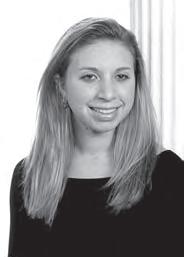



This young girl suffers from malaria. The ability to diagnose conditions such as hers depends on the use of an electric microscope.


A blood bank cannot be established without refrigeration, so blood transfusions are critical to caring for patients. In this photo, Kathryn is shown giving a live, life-saving transfusion.
Kathryn works with patients in the maternity ward, helping with basic maternal and child health care.
On October 20th, Sanford parents, faculty, administrators, and staff members spent a very enjoyable Evening in Tuscany during the annual Fall Event. About 150 guests tasted Italian wine and beer supplied by Kreston Wine & Liquors, dined on delicious food from Season’s Pizza, and listened to the music of Catherine Marie Charleton on piano and J. Jody Janetta on drums. It was a wonderful opportunity to make new friends and catch up with old friends. Special thanks to everyone on the Fall Event Committee who worked so hard to make this a successful party. Enjoy the pictures!
Rosemary Brooks, Home & School President, 2007–2008









Wiki: A shorter form of the Hawaiian language word for fast, “wiki wiki”
The Home & School Wiki is a web space accessible 24 hours a day through the Sanford website. It provides parents with a convenient place to obtain information, post opinions, and ask questions. Anyone can view our Wiki site as a guest. However only those who have joined the Wiki can participate in the discussion boards.

tO j OIN OUR W IKI :
• Enter the Wiki space
• Click on the “join” button
• Type a user name
• Choose a password.
The Home & School officers and your grade representative can help you with this process. If you need assistance, send an email to homeschool@sanfordschool.org.
Let your voice be heard; get your questions answered...jOIN tHE WIKI.

M a RK YOUR C a LEND a R
And Check Our Wiki for More Information
Casino Night
Sanford’s Biggest and Best Party of the Year
April 26, 2008
2007–2008
Home & School
All meetings are at 7 p.m. in the Stephen May Hall Commons March 5, 2008 May 21, 2008

Each summer, one-third to one-half of the Sanford faculty attend workshops, take courses, participate in seminars, work on curriculum, or travel thanks to the school’s generous professional development program. These funds come from two sources: the regular professional development budget which the Finance Committee of the Board of Trustees allocates to the Head of School, and the Home and School Association’s grants to the school.
In the summer of 2007, Middle School English teacher Christine Yasik embarked on two exceptional professional growth experiences. Below is Christine’s story about her week spent at the 44th Annual Westtown Seminar at Westtown School in Pennsylvania hosted by David Mallery, and her two weeks spent at the Shakespeare Summer Institute in Cambridge, England. Christine presented the first version of her story to the full faculty on the first day of teacher meetings in August 2007. We hope that the reader will enjoy her story. It is a classic example of the extraordinary value of professional development experiences.
Peter V. Buttenheim, Director of Advancement

Daniel Pink says that understanding story is one of the concepts needed for the upcoming right-brained world. I am reminded of the Christmas vacation when my then 19-yearold daughter wanted me to join her in the den so that we might swap college stories. My instantaneous response was that I had no college stories, that WAS my story, and I expected it to remain as such for at least another 10 or so years!!!
My usual summer story is one where I am satisfied to spend my time taking long walks, lingering over lunches with friends, and spending lazy days lounging at the Jersey shore. I read beach novels and am quite content to follow the words from a song in the musical “Wicked” and “just go dancing thru life, skimming the surface, staying where the turf is smooth…” Keeping my life uncomplicated has been a restorative antidote to the hectic pace I maintain during the school year.
Because the summer of 2007 was the antithesis of my usual routine, and because Sanford School personnel and funding enabled me to have such varied experiences during vacation, I find myself starting my 30th year as an English teacher composing an essay that originally was titled, what else, “How I Spent My Summer Vacation.” It has since been retitled “Savoring the Summer of 2007.”
I had two very different professional experiences, but they are connected by the sense of story—their own and their influence on shaping mine.
My first adventure was to represent Sanford at the 44th Annual David Mallery Westtown Seminar. I had only previously ventured to Westtown School on a school bus with seventh and eighth-grade athletes who were quite verbal in
their lamentations about how far away the school was, how late it was going to be when we arrived back at Sanford, and how much homework they had awaiting them when they finally got home. All of that was forgotten on a glorious summer day in June when I drove with the convertible top down, the Dixie Chicks rocking out in the background and the sheer beauty of those Chester County back roads offering me a visual feast of nature. Anticipation and expectation filled my car and my spirit.
I had no idea what was in store for me or the 38 other educators who came from Hawaii to Florida for the conference. I had only been told to expect an awesome experience. David Mallery is the story of these seminars. Being in his presence is to be encompassed by a man of great empathy, unparalleled listening skills, and an uncanny generosity of self. In addition to time with this Dali Lama of educators, our days were filled with the likes of Harvard professor Roland Barth, Rev. Paula Wehmiller, author/ psychologist Michael Thompson, and actor/screenwriter Victor Miller. We participated in a full day Outdoor Adventure series of exercises that fulfilled its mission and firmly cemented us as a supportive, cohesive group who became as committed to each other as we were to our own personal goals.
This was not a seminar that required note taking. In fact, we were asked not to. This was not a program designed to provide specific lessons ready to implement in our classrooms in the fall, nor was it created to light a fire under educators who had lost their spark. It was a forum that gave us unconditional affirmation that our job is truly a noble calling and that we were being treated to some uninterrupted time for learning, sharing, reflecting and responding with others of like mind. No end product was expected, and no specific goals were to be met and evaluated at the end of the week. It was simultaneously freeing and intense. Under David’s expert
and unobtrusive tutelage we quickly created a community that continues to be sustained through our own website and regular blogs. Who could have anticipated that I would be a blogger?
Flash forward to exactly one month from the end of the Westtown Seminar to my arrival in Cambridge, England, to attend the Shakespeare Summer Institute at Cambridge University. For years I have toyed with the idea of attending this program, and I could scarcely believe that my dream had actually become a reality. I had spent the better part of the spring and early summer preparing for this coursework by selecting from among the 30 or so highly suggested and strongly recommended books from the reading list. There was, I promise, not a beach novel in the bunch! I confess to being very selective and to resorting to skimming and scanning skills that I do not routinely employ as a reader. I arrived in Cambridge with about 10 pounds of books in tow, a couple of new pens, and several notebooks with all the exhilaration we hope our own students feel on their first day of school. I predicted almost immediately that this experience was going to add a special layer to my own personal story, and I was not wrong.
The city of Cambridge is a story unto itself. It is a town rich in history and full of breathtaking architectural beauty. The 31 individual colleges under the auspices of the Cambridge University umbrella all have their own campuses, complete with elegant dining halls, dormitories, which are not so elegant, and chapels that were often larger than most churches I have attended. The detailed stone work, imposing steeples and lush gardens of these colleges meld with narrow winding streets, the River Cam and assorted small shops and pubs to create an atmosphere that is electric with life and energy woven into the fabric of stately stability, assumed nobility and obvious longevity. While punting down the River Cam, I learned the stories, whether true or local folklore I do not know, behind the many bridges for which the city is so famous and the stories of the gates and sundials at the various colleges. I heard stories of pranks that take place between students from the different schools and even stories about the geese and their role in the annual contest to determine which college has the most beautiful lawn. You can write your own ending to that story!
At St. Catherine’s College, my home for the next ten days, I bonded with educators from France, Austria, the UAE, Canada, and even one from what some considered the most foreign of all places, New Jersey. Our days consisted of two 90-minute seminars along with a morning and an evening lecture, all on some topic related to the consummate storyteller, William Shakespeare himself. I studied the Language of Shakespeare and Romeo and Juliet from Page to Stage. In that class we started with Arthur Brooke’s original poem and we ended with the recent film starring heartthrob Leonardo DiCaprio. Who knew that Romeo and Juliet was performed as a burlesque show in the 1800’s? Who knew that when I finally was cast after all these years as Juliet that it would be in a version where she only utters a single line? So much for my Shakespearean acting debut!
My days were filled with intellectual stimulation from morning till night. My little group and I met during our morning break at the Buttery and fought for talking time while we sipped tea and munched on what I later found out were not low-fat scones. We walked from our evening lecture to a different local pub to enjoy a pint of British ale and decompress from the last session of the day. I felt like a sponge soaking up so much information about the Bard, learning from noted scholars who have devoted their entire professional lives to the study of Shakespeare, while also learning so much about the history of England. With so many interesting ideas being tossed out and so much information to process, these conversations were not just delightful, they were essential if I was going to make room in my brain to try and do it all over again the next day.
Our break after the afternoon seminar and before our formal dinner at St. Cat’s was also our time to take an intellectual break if so desired. An unexpected highlight and a favorite new story is the hour-long walk I took one afternoon after class with Angelika from Austria. As a seven-time Cambridge veteran, she was excited to share with me a special spot she had previously discovered. Our destination was simply called The Orchard. It is a grove of fruit trees nestled in between the ancient town church and a few thatched roof homes that comprise the main street of the quaint village of Grantchester. We trekked along a large creek through a grassy field complete with large cows lazily grazing within inches of us. Their unnerving presence was my only distraction in an otherwise picturesque journey. Eventually, a stone chimney dotted the horizon and a stereotypical English cottage complete with a wildflower garden resplendent in shades of pink and purple came into view. We wound around a narrow cobblestone path which led us to a nondescript green-lettered sign that modestly announced “The Orchard.” Here, underneath apple and pear trees laden with ripening fruit were plain wooden tables and green sling-backed canvas chairs beckoning families, students and couples to come and sit, relax and enjoy the unspoiled natural beauty. This spot was made famous by attracting such authors as Virginia Wolfe and Rupert Brooke. And now, in the summer of 2007, I found myself in the exact same surroundings they had found so inspiring. While sipping tea and swapping stories with my new friend, I realized that I was making this and so many other memories as a result of the opportunities offered to me by Sanford. How different my story would be had I not accepted a teaching position here nine years ago.
I have just recently returned from Atlanta where my now 26-year-old daughter resides. She, too, had an incredible professional growth opportunity this summer. This time when she suggested that we swap stories and share our adventures, I readily agreed. I started by saying, “Lisa, I did not even know that I had started this summer as a desert until it ended, and I felt like I was in full bloom.”
That IS my story, and I am sticking with it.

With fall sports behind us, the winter season brings a flurry of activity to the Sanford Sports Center. Wrestling matches and basketball games occur on a frequent basis for the Middle and Upper School teams. The Upper School swimming/diving team and the new Upper School winter track team practice and compete at off-campus sites. Along with the excitement of a new season, the winter brings our seniors closer to the end of the college application process. Some will seek to find a college that will allow continued participation in competitive athletics, while others will put their competitive athletic careers to rest upon high school graduation. Many Sanford School athletes do continue their athletic careers at the college level.

Our graduates have gone on to play at NCAA Division I, II, and III colleges in a wide variety of sports. One need not be an all-state caliber athlete to enjoy a successful collegiate career, as long as the proper college choice is made that fits both the student’s academic and athletic ability levels. Athletic scholarships are available to the most talented of athletes, but, in reality, the majority of high school athletes do not receive athletic scholarship money.
We encourage our student-athletes to stay involved in athletics beyond their careers at Sanford. In addition to participation as an intercollegiate athlete, continued involvement in athletics could be achieved through college intramurals, adult leagues, club teams, officiating, or as a coach. With that said, I am very pleased to have six of our graduates back at Sanford among our talented group of coaches this winter.
While our seniors weigh their college options, I wish them success as they lead our Sanford winter and spring teams. I invite you to come out and support our teams throughout the remainder of the school year. Cheer loudly for our senior student-athletes. You may see them in the future wearing the uniform of your favorite college team!
GO WARRIORS!!!
Joan S. Samonisky, Director of Athletics

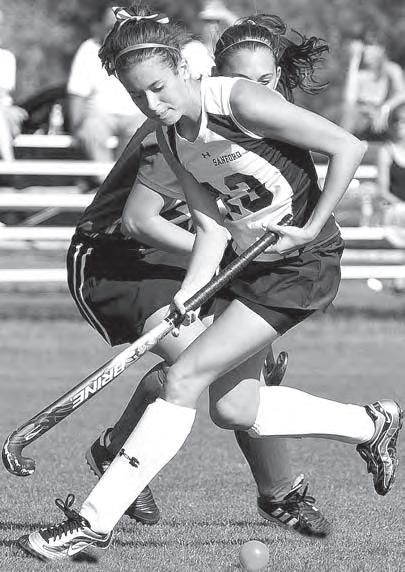












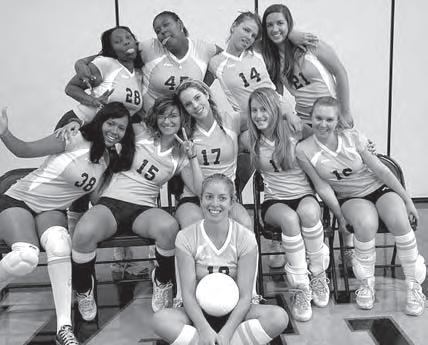


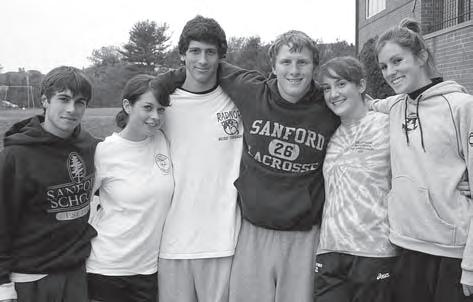
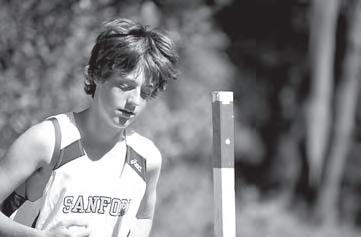
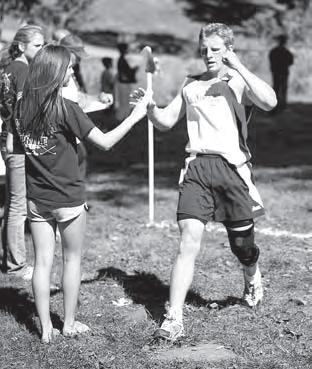

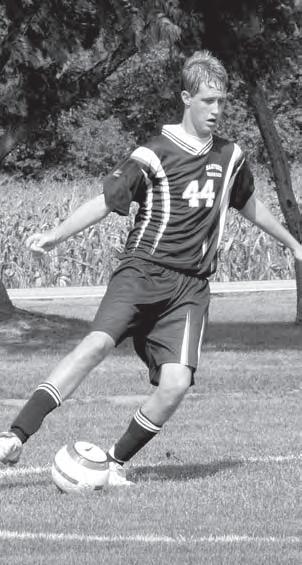



SOCCER
First Team All-Conference: Kevin Walpole, Brandon Wollaston, Ian Thresher
Second Team All-Conference: Alex Olivieri, Greg Kramer, Brian Thresher
Third Team All-Conference: Aaron Moyer

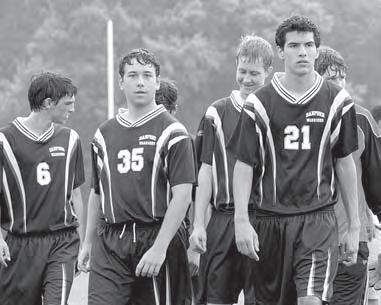

Second Team All-State: Kevin Walpole
Third Team All-State: Brandon Wollaston
Senior All-Star Game: Ian Thresher
fIELD HOCKEY
First Team All-Conference: Diana Aulisa, Morgan Ayars
Second Team All-Conference: Sukey Hendrix, Lauren Olivieri, Amanda Noel
Honorable Mention All-Conference: Whitney King
Senior All-Star Game: Whitney King
CROSS COUNtRY
Girls: 9th in County Meet, 5th in State Championships–Div. 2
Boys: 13th in County Meet, 14th in State Championships–Div. 2
VOLLEYBaLL
First Team All-Conference: Loryn Green
Second Team All-Conference: Katie Potter
Honorable Mention All-Conference: Miranda Warrington
Senior All-Star Game: Jasmine Gibson


Sanford celebrated Homecoming 2007 on Friday, September 28th and Saturday, September 29th. Here are just a few of the highlights from the weekend which featured a wide array of activities and events for the Sanford community.











Remember when Sanford was a boarding school? Many of these Homecoming attendees certainly do. They are (back row) Owen DeRis ’57, Don Gray, Dave Wilson ’57, John Hunt ’56, Bob Heron, Frank Bailey ’57, Bill Hildebrandt ’57, Bill Sawin ’45, John De Ris ’57, Bill Pepper ’57, and Ben Wilson ‘58. In the front row are Bud Keith ’57AA, Dot Gray ’57, Katrina Wilson ’57, Susan Webb ’57, Helen Yates Heron ’57, Pat Crossan Martin ’57, Anita Hildebrandt, Valerie Fitch Janard ’57, Nancy Jo Pepper, and Candy Wilson.

Sonia Moorthy ’97 and Kelli Wilson Maio ’97 took a moment to reflect on their memories of classmate Deeg Sezna ’97.






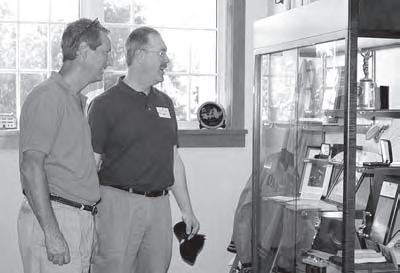




Editor’s Note: The following letter is reprinted with permission from Nancy Boots Edwards-Cogswell who attended Sanford School from 1945–1946.
Thanks to our itinerary and schedule, my husband, Dick, agreed that we make a side trip to Hockessin enroute home to New Hampshire from a road trip to North Carolina in September. I found myself back in time, yet strangely current.
Our entrance into the administration building resulted in almost instant welcome with cataracts of information mixed with strong reminiscences. Each person was so gracious and informative. We stepped out to begin our campus tour loaded with tee shirts, mugs, alum. mags., a CD and much more. I wear my gold Sanford Tee with pride. Mother Sawin clearly sought to create a utopian educational community through the strength of the educational dynasty she established, and this is obvious still today.
Shortly, we went over to my dormitory from my 2nd grade year in 1945-46, walked down the back, and looked over the landscape. Not much had changed; things were absolutely recognizable. We went into Hebb House and up the stairs to the bedrooms of the dormitory style housing. I had not realized until seeing my photos later at home that there had been an addition to Hebb Hall and the very spot I declared as my slice of bedroom would have been in mid-air suspension; I can see now that it was in the left front corner of the main section in what is now a lively visual arts building. I could almost feel myself lying on the little bed during rest hour. Funnily, I have no recall of the adults who cared for us in that house.
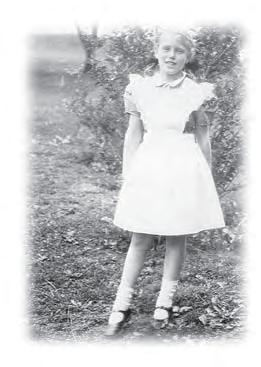

I remembered some of my classmates and confirmed this with a few photos. They look so small and young, but mostly smiling at Dad who had the camera trained on us and Mother. Fortunately, I wrote the first names of the girls around the margin of one group picture and I hope this helps somewhat with more identification.
Our tour continued up the hill to the charming classroom building where we were educated in nontraditional style. I had been advanced somehow and did not get the arithmetic foundation I needed, a deficit that was to present problems all through school. But, perhaps it was all there and I was not ‘wired’ for math from the very start. The emphasis was on hands-on learning, flexibility and the engagement of each student. I thrived on this.
My brother Bob was in 7th grade and is seen in one photo with a classmate both looking very fine in blazers and slacks. He was helpful in understanding some of the school year experience. The school was not exactly experimental, but it was experiential and nontraditional. He understood this even then. Freedom was promoted and projects which integrated life skills and experience with the long view in mind were undertaken. Emblematic of this were the painting projects and workshop activities directed by a gentleman who had lost a finger in an accident who taught Bob a lot. Our dad had woodworking equipment and was a good designer, so Bob



got some of that at home, too. While he does not recall the didactic education, he says it was obviously adequate as he had no difficulty transitioning into the next school and on into the higher grades. Bob recalls the international students and that might be Paco from South America in the photo with him. He remembers Phil Sawin as a good man and good role model; Bob attended “Bible study” in their living room on Sundays. He also remembers Nancy Sawin, as do I.
He spoke of Mother Sawin and her philosophy which had a very ‘naturalistic’ quality, evident even to a 7th grader. He thought she might have been a Christian Scientist as he recalls being taken to my dormitory because I had a very sore throat and fever; his job was to be with me and coax me back to good health. That interested me, and I shared with him the time I had an abscessed tooth and was taken to Wilmington by staff to have a dental appointment. It was winter and dark when we returned, and I was given a suitable dinner in a special place. On the tour I recognized that dining room. This is interesting in that he became a Harvard-educated surgeon and I, a Yaletrained nurse.
Bob filled me in on the musical play (an extravaganza) that I had recall in bits: it was The Green Pastures, stories of the Old Testament told and sung by an all black cast. He recalled that faculty, staff and students played roles and all players were in black face. He remembered Gordon Pirnie. I thought he was a classmate and recognized him in a picture in the dining room. Bob said Gordon was the son of a faculty member who sang in the production, perhaps the lead with a good bass voice. From Netflix I obtained The Green Pastures film starring Rex Ingram, made in 1936 and watched it with great interest. The disclaimer at the beginning declares the point of view at the time and of the producers, so it was understood in context. I recommend this film as it would add perspective to one of the major activities on campus.
Other classmates were the Hahn girls: Lee Ann and Merilee. Bob also recalls that one of the girls, we think Lee Ann, was
deaf and had a unique voice pattern. They were both lovely, smart girls. We both concurred on these memories.
I learned in the school history book that the chapel was erected in 1943 so, in spite of my not recalling it at all, it must have been the building seen partially behind Hebb, and I must have seen it daily. Obviously I concentrated on my friends and our play activities. That snowy hill was what we knew of Sunny Hills in the winter.
Bob explained to me that the schools we attended in those years, and the full summer camps were “the best place for us” and were chosen and arranged for our benefit. He certainly benefited, and has great recall, and though I remember homesickness and no parent figure in the dormitory itself, the overall experience was of being well cared for in all spheres: education, welfare, health, and play with emphasis on creativity. These are all essential to me now as I face my 70th birthday a month from now. Curiously, it is many, many years ago yet the school remains very present in my mind. Your staff seems top notch, and I was glad to connect with them. They are so generous and helpful. I am thankful, grateful, and so impressed, so very impressed, by the philosophy of raising the whole child that continues today despite the day-school changeover.
I will try to support the school from time to time and will read of the activities with great interest.

Nancy Boots Edwards-Cogswell
245 Burnt Hill Road
New London, NH 03257
603.763.2431
rjcnec@tds.net

What do a Founders’ Day celebration, an SrTC production, a Middle School Wax Museum, and Native American Week have in common? They all occurred on the Sanford campus in the fall of 2007. Here are a few highlights from those events and other autumn activities.
The Founders’ Day award is presented every September to individuals who embody the heart and soul of Sanford School. The recipient of the 2007 award was Sanford parent Sandy King. During the presentation of the award, Head of School Chip MacKelcan noted some of Sandy’s many professional and community service accomplishments. His remarks included the following message:
SrTC presents You Have the Right to Remain Dead

OSomehow, with so many important commitments requiring her time and attention, she found time to make a difference at Sanford. For example, she served the Home & School Association as vice president for four years and then succeeded Kathy Herzog as president. She served on the 75th anniversary committee, as an auction volunteer, helping with SRTC productions, and most recently as the driving force in the reorganization of the Spirit Store. On top of all of that, she was one of the co-founders of the Delaware chapter of Community of Concern, an organization which has done extraordinary work with independent school parents on issues pertaining to substance abuse and teenage decision making. Currently, she serves on the Sanford Board of Trustees and chairs the Committee on Trustees, the group charged with identifying new Board members for our school. That is quite a resume, isn’t it?
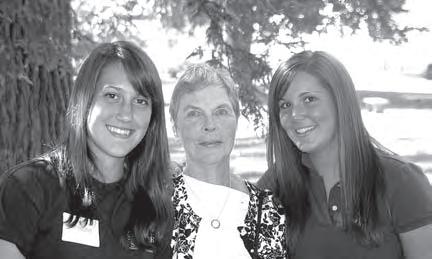
n November 9th and 10th, the Sanford Repertory Theatre Company opened its 15th season with Pat Cook’s You Have the Right to Remain Dead in Geipel Gymnaisum. This audience-participation mystery/comedy featured Ryan John ’08, Kane Kalas ’08, Maddy Gondek ’10, Sean Ryon ’08, Elizabeth Perry ’09, Sarah Halbert ’10, T.J. Potter ’11, Ella Wagner ’09, Richard Townsend ’09, and Zoe Batt ’11.

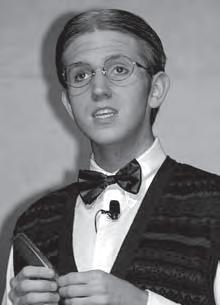


Native American Week, held every year in November, is an opportunity for fifth-grade students to learn about three different and diverse pre-Columbian Native American cultures. Three groups of students are responsible for designing and decorating an environment— including a representative shelter—that represents the one culture they are studying. Lessons of mathematics, writing, and science focus on Native American values and environments.


Most and best of all, I loved when Quiet Thunder came. He really made me understand and want to learn more about the Lenni Lenape people. There was something about him, something that separated him from anyone that I’ve ever met. I enjoyed when he showed us how his people caught animals in traps and how they hunted and camouflaged themselves with animal skins when hunting. WOW! WOW! WOW! I will always remember him. I will leave Native American week with vivid and valuable lessons that I will never forget!!!
• shannon babcock,


Emily Simonton ’11 recently received a second-place award in the The Art of Living Foundation’s Kids for Kids essay writing competition. Last year, Emily was one of three Sanford eighth-grade students recognized for writing outstanding essays in the statewide program. The two other students were Nolan Bacchieri ’11 and Cindy Duan ’11
In October, Shilpa Garg, Art of Living Coordinator for the Kids for Kids Program, presented a laptop and certificate to Emily.
Eleven percent of Sanford School’s 2008 graduating class are being honored by the National Merit Scholarship Program.
Sanford recently received notification that four seniors have been named National Merit Commended Students. They are Sarah Greenwood, Kane Kalas, Saran Singh, and Nikhil Sitaram
Previously, two Sanford seniors were named 2008 National Merit Scholarship Semifinalists. They are Brian Nachbar and Brittany Bowman. Both students have an opportunity to continue in the competition for some 8,200 Merit Scholarship awards, worth $34 million, that will be offered next spring.







Working within Sanford’s club structure, a small group of student leaders, with the support of three faculty advisors, worked diligently last spring to launch a new club this fall, Spectrum. Spectrum’s mission is “to create a more accepting and positive environment for gay, lesbian, bisexual, transgendered, and questioning students in our school by increasing awareness and fostering respect.” The Spectrum Club is designed to be a secure setting for any interested students to cooperate in eliminating stereotypes and increasing understanding in our school by discussion and action in a non-judgmental and confidential atmosphere. The club has an active membership of about 30 students and has launched several positive activities including: walking in and supporting AIDS Walk Delaware in September; running a successful ALLY week program in October where more than 100 students and faculty signed pledges to do their part to actively support safer schools efforts; and having a brief program in late November commemorating the anniversary of the hate crime beating death of Matthew Shepard in Wyoming in 1998.

In October, students in kindergarten through eighth grade learned about the work of Pablo Picasso during several presentations and workshops in the Sports Center. Picasso People, an innovative art education program, explored Picasso’s work in a light-hearted array of clever stories and vignettes based loosely on his true-life experiences. During the nationally acclaimed production, Picasso’s paintings were brought to life using mime, masks, puppetry, narration, and music.
Picasso People, based in New York, meets three of six National Curriculum Standards for Art Education.


jUNIOR WINS t HIRD p L a CE IN C atap ULt DIVISION
The Upper School science and engineering club, Project Beyond, recently placed first in the Youth 11-17 Trebuchet division of the 22nd Annual World Championship Punkin Chunkin competition in Bridgeville, Delaware. The team’s trebuchet, The Arbiter II, hurled a pumpkin more than 690 feet in the competition. The Punkin Chunkin team consisted of (clockwise from bottom left) Brian Chorman ’09, Cameron Vansant ’09, Jesse Brown ’08, Maggie Younger ’09, Alex Beattie ’09, Richard Townsend ’09, Ben Bacciochi ’10, captain Jesse Taylor ’09 (seated), and Mike Rosauri ’09. Team members not shown in the photo are Louis Baum ’09, Chris Copeland ’09, Robert Nutini ’09, Lauren Ritter ’09, Chris Kerwien ’09, and Josh Smith ’09

Sanford junior Jesse Taylor achieved thirdplace recognition in the 11-17 Catapult division. His Punkin Pitcher, designed and constructed from scrap metal he found in junk yards, sent a pumpkin more than 730 feet.
“This win shows everyone that money will not guarantee a wining chunk. This goes to show that a small group of students can best even the ones with expensive trebuchets.”
• cameron vansanT

“Our efforts to strive for victory made this one of our best years yet! Continually upgrading and improving the trebuchet really paid off, as seen in our outstanding performance at the competition.”
• richard Townsend
Twenty current and former Sanford School students have earned the designation of AP Scholar by the College Board in recognition of their exceptional achievement on the college-level Advanced Placement Program (AP) Exams. Students took AP Exams in May 2007 after completing college-level courses at Sanford.
Four students qualified for the AP Scholar with Distinction Award by earning an average grade of at least 3.5 on all AP Exams taken and grades of 3 or higher on five or more exams. The students are Chris Miller ’07, Ben Peoples ’07, Michele Rodeck ’07, and Varoon Sachdev ’07.
Eight students qualified for the AP Scholar with Honor Award by earning an average grade of at least 3.25 on all AP Exams taken, and grades of 3 or higher on four or more exams. The students are Brittany Bowman ’08, Kelly Breen ’07, Emily Kearns ’07, Alex Krenz ’07, Brian Nachbar ’08, Sean Ryon ’08, Suchit Tuli ’08, and Andrew Younger ’07
Eight students qualified for the AP Scholar Award by completing three or more AP Examinations, with grades of 3 or higher. The AP Scholars are Lily Bieber-Ham ’07, Brendan Giza-Sisson ’07, Nate Knisely ’07, Lauren Park ’07, Anna Roosevelt ’07, Niel Rosenthalis ’08, Hadey Salem ’07, and Nikhil Sitaram ’08
The College Board’s Advanced Placement Program offers students the opportunity to take challenging college-level courses while still in high school, and to receive college credit, advanced placement, or both for successful performance on the AP Exams.

Many students and faculty members in the Upper and Lower schools enjoyed donning costumes for the day.





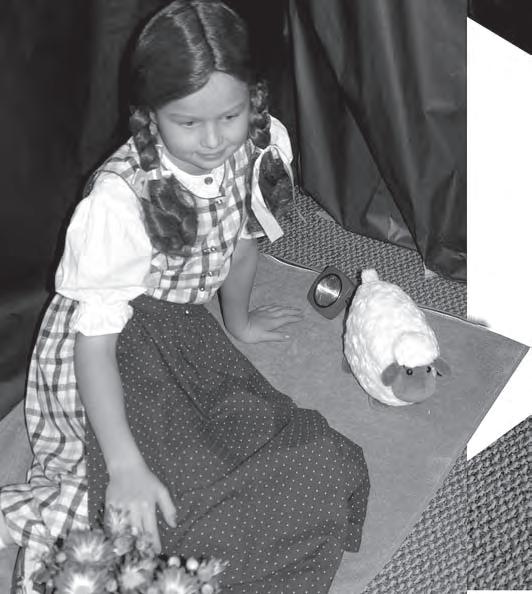
ifth-grade students presented the finest in children’s classics en tableau during the annual Middle School Wax Museum.




Our recent article on alumni in the arts prompted Steven C. Daiber ’73 to report on his career as a book artist and owner of Red Trillium Press in Massachusetts. Since 2000, Steven has traveled seven times to Cuba, where he worked in different print shops and taught workshops on the making of books. He also collaborated on a book project, Almendrones, with ten Cuban printmakers about the pre-revolution cars rumbling along the streets of Havana. You can learn more about Steven and see examples of his work at www.redtrilliumpress.com
Betsy Conner ’70, wrote to say that after seven years touring as a company manager on national tours of Broadway shows, she has returned, at least for now, to stage management. “I like company management and love touring, which has allowed me to visit and enjoy cities I might not otherwise have visited—I even spent eight weeks in Japan a couple years ago—but there’s more artistic satisfaction with stage managing, and that I’ve missed,” she says. In the early fall Betsy was in Long Beach Island working as a production stage manager on two plays and in late fall she returned to Wilmington to be production state manager for “Home for the Holidays,” a musical review at The Baby Grand Theatre.
Marc Olivere ’72 also works in theater—as production manager at Boston Playwrights’ Theatre. He is also a lighting designer with credits at numerous New England theaters, and he writes plays and fiction.
Stanlee Nott Wetzel ’58 has retired from her career as a photojournalist and corporate photographer to devote herself to fine art photography. Now living on Cape Cod, she is a juried member of the Cape Cod Art Association’s fine art photography division and has won numerous awards for her work. She also has taken up watercolor painting.
John Anglim ’66 makes his living as an artist and a musician. For years he lived in Texas, playing professionally with country, rockabilly, and blues bands. As a member of the acoustic trio Zen Café, he opened for performers such as the Dixie Chicks and Trout Fishing in America. John is now half of the acoustic duo Flat Top Reed, which is enjoying success in Colorado. (Readers can hear a sample of John’s music at www.flat-top-reed.com.)
Clark Hawgood ’91 credits Sanford for helping him to discover his artistic talent. Now he is passing along his love for art as a middle school art teacher at Charlotte Latin School, a prep school in North Carolina, and as an instructor for teens and adults at a local art school. Clark shows his own paintings in galleries and art shows (view his online gallery at www.clarkhawgood.com).

He has temporarily given up his involvement in theater because of the demands of work and fatherhood, but he stays in practice by teaching improv classes to upper school students at Charlotte Latin.
Here are a few more of our alumni in the arts:
• Jon Bjornson ’50, sculptor and photographer
• Owen De Ris ’57, stained glass artist/restorer
• Irene Troy ’71, freelance writer and photographer
• Michelle Suwyn Gardiner ’88, owner of a paint-your-own ceramics studio
• Kim Davis ’89, lower school art teacher
• Dan Halprin ’89, middle school and upper school art teacher


It is rare for a person in the academic world to teach/coach for fifty straight years. It is even more extraordinary when a person accomplishes this at the same institution. We have such a person in Jackie Pitts ’55. The 2008-09 academic year represents her fiftieth year at Sanford School. This is a remarkable achievement!
In recognition of Jackie’s five decades of teaching at Sanford, we are dedicating our Fall Homecoming 2008 to Jackie. While much of Homecoming will remain the same—student games, alumni events, class gatherings and remembrances, Alumni Awards, and the like—we are planning an all-classes dinner in Jackie’s honor to be held in the Sports Center on Saturday, September 27—instead of the usual quinquennial class dinners at area restaurants and in homes of alumni.
For the classes ending in 3 and 8, we will reserve special tables for your members that evening as reservations come in. If nonreunion classes want to come back in force, then we will reserve tables for them as well. We know that current and past parents —as well as faculty members—will want to reserve tables, too.
Complete details for the Fall Homecoming 2008—with a response piece—will be mailed early next summer. However, please save the dates now and contact one another about returning to Sanford en masse. As the montage of pictures on this page illustrates, Jackie Pitts has been a life-long teacher, coach, advisor, mentor, and friend to untold numbers of Sanford graduates. Please come back to Sanford next fall and help us celebrate this splendid educator.
Regards,
Peter V. Buttenheim, Director of Advancement






Sanford’s basketball program began in the school barn. The hayloft was emptied, baskets hung, and lines painted on the floor. All practices were held in the barn, but all games were scheduled “away”!
Geipel Gymnasium (the first building on the right when entering Sanford) was built in 1950 to honor the memory of Ashton T. Geipel ’38 whose Purple Heart from World War II is displayed in Stephen May Hall. The team pictured here was one of the forerunners of Sanford’s basketball dynasty. They could have won the state championship, but didn’t… because there was no such competition.

How much do you recall about Sanford’s early years? Take this quiz, share your knowledge with us, and you could win a prize. The first person to email Jackie Pitts (pittsj@sanfordschool.org) with the most correct answers will win a Sanford T-shirt. All email submissions must be received by March 1, 2007.
1. What year was this photo taken?
2. Where was this photo taken?
3. Name the team members:
Coach (left)
Coach (right) #11
Look for the answers, and the name of the quiz winner, in the next issue of SANFORD magazine.
Ann Ellis Salwey ’51AA recently noted, “As one of the British children who came to Sunny Hills, in August of 1940, I remember many of those who served in WWII. Bill Stewart ’37 used to carry me around on his shoulders.” (Note: Stewart Cottage was named for Barbara Kelsey and Bill Stewart “Stewy”, who were the first students to marry and continued to live at the school. Stewy was killed in WWII.)
In August of 2007, a group of classmates from the Class of 1968 got together at the home of Kathy Moon Hughes in Georgetown, DE. In the picture below (from left to right) are Mo Reardon, Stephanie Tramdack Cash, Helen Wright Ruff, Pamela Crandall and Kathy Moon Hughes. Also joining us for the weekend were Emily Canter Maceira and Bobbie Blake. Helen said, “We had a wonderful weekend and renewed old friendships. We plan to attend our 40th Reunion in 2008 and encourage other classmates to start making plans to attend.” Helen and Kathy also had lunch with Ida Smith who worked at Sanford for many years and has stayed in contact with many from Sanford. They said it was wonderful to see her.
Betsy Conner ’70 told us to say hello to everyone and that she is doing well. She was so sorry to have missed Homecoming yet again. Betsy said, “This year I was close but I was in Long Beach Island, New Jersey working as production stage manager for a production of The Miracle Worker and Arsenic and Old Lace. After seven years touring as a company manager on national tours of Broadway shows, it was nice to be closer to home and doing
what I’ve spent most of my career doing. Don’t get me wrong; I like company management and certainly the touring has allowed me to go to some great cities I may not otherwise have visited…even spent eight weeks in Japan a couple years ago, but there’s more artistic satisfaction in stage managing. I look forward to more information on who was in attendance. Hope everyone had a great time.” Betsy also mentioned that her dad is ornery as ever; her mother broke her hip last year, but is better now and still working! Her brothers, Andy ’75 and David ’73 each have one child, and Sallie Conner Rush ’78, her sister, has two. Betsy sends her best and would love to hear from anyone/everyone.
Roberta Shipp ’70 has a pretty amazing service dog named Judge who was awarded the Omega Tau Sigma Service Dog of the Year award. Judge, a three-year-old chocolate Labrador retriever trained and placed by Fidos for Freedom was honored for 2007. Roberta has lupus and rheumatoid arthritis and says, “Judge is really a wonder dog in that he opens and closes doors, gets my laundry out of the washer for me, opens and closes the refrigerator and dishwasher and can also turn off and on the lights. He’s also been trained to remove my coat, as well as other articles of clothing. Judge accompanies me everywhere and often evokes a cry of, “I didn’t know there was a dog in here,” when he emerges from under the table at a restaurant or conference. Judge and I do many “d’Ap” (disability awareness) demos for schools, as well as programs for various charitable organizations all over the D.C./ Maryland area. Just a bit more

background…it generally takes between eighteen months and two years to receive a service dog from Fidos for Freedom. This includes the time from the first interview to determine your acceptance into the training program, all your training before you are matched with a dog, your training, one-on-one with your dog, and, finally, your probationary year before the dog is officially yours. It is a long time, but entirely worth it. Judge has given me so much independence, and also he’s given me back confidence that I lost while my health was getting worse and I was reluctant to go places without help. Now, because Judge is always with me, I fall less and know that he can always help me up if I do have a problem. Stairs became difficult for me to manage without Judge. Now, they are no big deal, and Judge and I go most places without knowing what the terrain is and we are fine. What a tremendous difference he has made in my life! In other news, my daughter, Maritta, and her husband gave me a beautiful granddaughter, Haleigh, who is now two. Kirstin, my younger daughter, is now studying sociology at West Virginia Wesleyan College. I’d love to hear from my Sanford friends at bshipp@verizon.net”
We have reconnected with Fay Viapree Boldt ’73. She lives in Florida and has told us she is working and doing a lot of traveling as well as taking care of her husband who had a heart attack and a stroke. We’re hoping Fay will be able to make it back to Sanford for her 35th class reunion in the fall.
Peggy Kutzleb Devers ’78 wrote to say she’s been working as a flight attendant for 24 years. She is married and has a beautiful 16-year-old daughter.
Michelle Suwyn Gardiner ’88 wrote, “Chris and I are excited to announce the birth of our son, William Alden Gardiner (Wylie), born June 12, 2007. Sisters Maddie (6) and Sophie (2) love having a brother. I currently live in Chesterfield, Virginia where I own my own business, Art Solutions LLC. We provide therapeutic art experiences for people in crisis.”
Devon Morrow ’89 is a teacher assistant at the Bank of America child development center in Wilmington. She is single, and catching up with people she hasn’t seen in years.
Domenic DiUbaldo ’94 and his wife Christine announce the birth of their third child, Giuseppe Antonio (Joey), who joins big brother, Domenic and sister, Sophia
Nick Darling ’96 is still in the Navy. He has just finished his sea tour on the USS Florida—a special operations submarine out of Kingsbury, Georgia. Nick has recently married and is now on shore duty in Groton, Connecticut for the next two years.
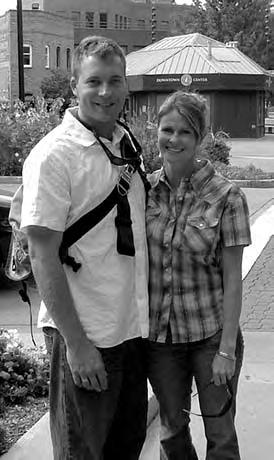
Erik Nilstoft ’96 of Fort Collins, CO recently became engaged to Kathleen (Kat) Kellogg of Santa Barbara, California. Both are employee owners of New Belgium Brewery located in Fort Collins, Colorado. An October 2008 wedding is planned.
Ben Sutherland ’96AA sent us his life update. “Man it’s been so long since I last wrote or went to Sanford. I have just completed the Coolangatta Gold Surf Ironman Race coming in 54th in the open division in 5 hours and 38 minutes. The race is a 46.65 comprising a 23km ski paddle, 3.5 km swim, 5.5 km board paddling, and 14.65 km of running.

Other than that I have been working as a lifeguard for Waverley Council which includes Australia’s most famous beach, Bondi. While working on the beach, we have been featured on a reality TV show called Bondi Rescue. The show follows us round during our job and films the routine and rescues of the summer very much like Cops. The council takes part in more than 2,500 rescues a year, with several successful resuscitations performed throughout the year.
I am living with my girlfriend Lauren and we are planning a trip to Sanford during August 2008. I hope to catch up with a few people while I am back.
According to Lisa Nowicki, Daria Karp ’97, Beth Mercante ’97, Greg Jacobs-Roseman ’01, and Kyle Levenick ’03 are all living in NYC. Daria is a producer on the Martha Stewart Show. Beth works for the MoMA; Greg just finished his Masters in musical theatre writing at NYU (a very prestigious program for music composition); and Kyle just moved to Brooklyn and was in search of a teaching job. Lisa said, “It was great to see these kids again and to see them doing so well. I introduced them to six of our current students when we were on our SRTC trip this summer. We had a great time.”
Ally McGowan Walker ’99 and her husband Doug have a new son, Zachary (one month old). Ally and family are living in California.
Gregory Jacobs-Roseman ’01 received his MFA in musical theatre writing from the Tisch School of the Arts at NYU this past May after earning his BA in musical theatre and music composition in 2005 from Emerson College and the Berklee College of Music in Boston. His songs have been performed around New York City, at the Goodspeed Opera House in Connecticut, and as part of the musical revue, Ridiculously Talented Composers And Lyricists You Probably Don’t Know, But Should at Barrington Stage in Massachusetts, hosted by Tony award-winning composer/lyricist William Finn. Greg’s new musical revue, Cold Turkey, is set to premiere in New York this year.
Sara Salvatore ’02 has just landed her first professional acting job that will enable her to join the Actor’s Equity Association. Once she is a member, she will then be permitted to audition for any show on Broadway and other professional theatre jobs. Sara said, “I’m going on tour with ArtsPower starting October 7th! I will be heading West to Seattle, San Francisco, Southern California, Arizona, Illinois, Texas, Vermont, North Carolina, and many other places…I will play Dawn, the new girl who shakes things up
a little bit at Polk Street High. I get to see America and perform with a wonderful cast in a really great show. I’m really, really excited.” One of the stops on her tour is in Philadelphia and it is a show that is geared toward children (middle school age pre-teens).
Daniel Honig ’03 is very proud. He graduated on December 13, 2007 from Arizona State University with a degree in tourism management.
Courtney Kendall ’03 graduated from Salisbury University in May with a Bachelor’ of Science degree in physical education. She is now in her first year as a physical education teacher in the Colonial School District, teaching at three schools.
Ann Marie Pizzala ’03 received a Bachelor of Science in Sociology from Radford University on May 5.
Stephanie Smith ’05 became the first-ever Stevens Field Hockey Player to be named an All-American. Following is an article from the Stevens Institute of Technology sports page:
GLEN ALLEN, Va. (November 19, 2007)—Longstreth Field Hockey and the National Field Hockey Coaches Association released their All-America team selections on Monday, and Stevens Institute of Technology junior goaltender Stephanie Smith grabbed secondteam honors. With this award, Smith has become the first player in the four-year history of the Stevens field hockey program to be tabbed as an All-American.
Last week, Smith was named to the Division III All-Region team by Longstreth and the NFHCA. That accolade was also a first for the program. In 2007, Smith registered a mark of 11-6 with five shutouts. She also posted a goalsagainst average of 1.12, which placed her fifth in the nation in that category. Furthermore, Smith’s save percentage of .870 ranked seventh amongst all Division III goalkeepers. Over the course of the year, Smith received several honors from the Empire 8, which included a firstteam all-conference honor and two goalkeeper of the week awards.
continued on next page


She was also a recipient of the WomensFieldHockey.com award on October 4.
“It is an honor to have an athlete from the Stevens Field Hockey program recognized at such an elite level,” said Head Coach Jessica Reed.
“Stephanie is an incredible studentathlete, who has established herself as one of the best goalkeepers in the country. She has been a tremendous part of our growing success and is truly deserving of this award.”
“It is truly surreal,” stated Smith.
“It’s great to see that all the work the
team has put together over the years is finally coming out. I certainly feel that as a squad we have a lot of potential. If I can get this far, it will be amazing to see how far we will be able to go as a team in the future.”
Stephanie is majoring in chemical engineering at Stevens Institute of Technology, and currently earning a 3.61 GPA in her junior year.
Melissa Terry ’05 dropped by for a campus visit. She has a 4.0 grade point average and is on the dean’s list. In addition to her studies, she has a full time job at CVS Pharmacy
and also babysits part time. She hopes to go on to the University of North Carolina at Chapel Hill to complete her Doctor of Pharmacy degree.
Shadae Hicks ’06 was named the Freedom Conference Player of the Week on October 1, 2007 for her back-to-back singles wins in tennis. Playing in the bottom half of Manhattanville’s lineup, Shadae has now won three straight singles matches and improved 5-3 on the year in singles, the second best record on the team.

We extend our deepest sympathy to families and friends of these members of the Sanford community.
Barbara Morris, the wife of Clyde Morris ’54 passed away in August 2007.
Lubomyr Mykyta, the husband of Mary Ann Walls Mykyta ’55 passed away on March 8, 2007. He was born in 1925 in the village of Pykulchi, a few miles from the city of Peremyshl, Ukraine (now Poland). Following the Second World War, his family left Ukraine and in 1950, immigrated to the USA. Both Lubomyr and Mary Ann cared for both of his parents and uncle throughout their advanced years until their passing. Lubomyr began his career at Phoenix Steel Corp, in Claymont, Delaware and in 1966 moved to Harrisburg, Pennsylvania to head Astrotech, Inc., a division of Certified Testing Laboratories (CTL) until his retirement in 1994. Mary Ann and Lubomyr were married for over 40 years and have a son and three daughters.
James Robert Rosenfelder ’87 of West Chester, Pennsylvania passed away on May 28, 2005. He had been a general manager for Chili’s Restaurant for about ten years, working in Wilmington, King of Prussia and Downingtown. Jim was a graduate of East Stroudsburg University. He is survived by his wife, Aimee.
Send us your news about your job, travel, weddings, births, schooling, visits with friends, etc., for the next issue of SAnfOrD magazine. You may also use this form for any name or address changes. Please print the information below, then cut out the form, and mail it to Sanford School, P.O. Box 888, Hockessin, DE 19707-0888
Name:
Your News:
Class of:
Email address:
Please include my email address in the Sanford email directory (www.sanfordschool.org). OR EMAIL US TODAY AND LET US KNOW WHAT ’S NEW: alumni@sanfordschool.org

Clockwise from upper left: Kevin DiMauro and Hammond Knox support the sound of the Seventh and Eighth Grade Concert Band on the baritone saxophones. Middle School Chorus Director Clint Williams leads the holiday sing-a-long during the concert. Elizabeth Brown, oboe, and Dan Miller, saxophone, accompany the choir during the song Holiday Favorites Chris Hickey sings of the “eight disco balls” during the song The Twelve Groovy Days of Christmas


Photos from all three holiday concerts will be featured in the next issue of SANFORD magazine.
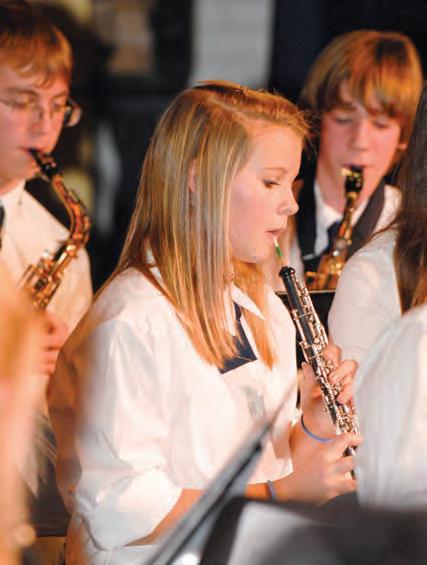

In October, Sanford sixth-grade students visited Plimoth Plantation during their annual class trip to Massachusetts. This photograph, which was taken along the Eel River, shows the scenic boardwalk that connects the Pilgrim Village to the Hobbamock’s homesite, the recreated homesite of the Wampanog Indians.